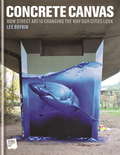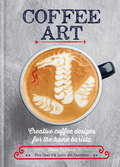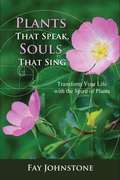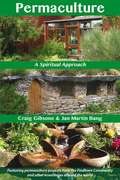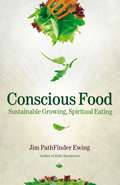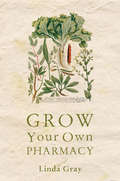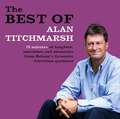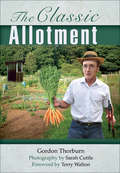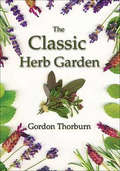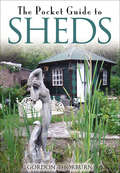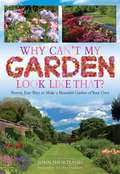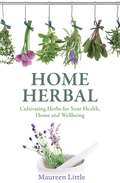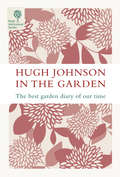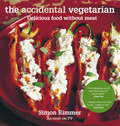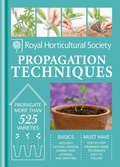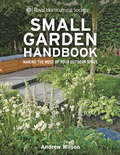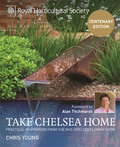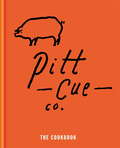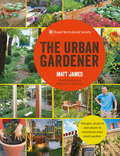- Table View
- List View
Concrete Canvas: How Street Art Is Changing the Way Our Cities Look
by Dr Lee BofkinWhat happens when you look at graffiti and street art as unlimited art forms instead of urban phenomena? Concrete Canvas does just that; investigating the media the artists work with, the canvases they work on, the themes that arise through their work, and the way their art redefines the spaces in which it is set.Concrete Canvas is filled with stunning photos of works from new and exciting artists, as well as established names, including Ron English, Phlegm, Daim, Invader and more. It examines how the curation of public space is affecting our cities and moving art into the future. Global Street Art is the largest online archive of street art photography. Here, its founder Lee Bofkin shares some of his best stories of documenting street art, which variously feature big guns, massive dogs and lots of abandoned buildings.
Coffee Art: Creative Coffee Designs for the Home Barista
by Dhan TamangOver 128 pages of 60 stunning designs from Britain's champion latte artist. From free pouring to etching, stencilling and more complicated designs for the black belt barista, you'll have fun emulating innovative designs such as The Swan, The Unicorn, and frothy 3-D babyccino animals. The book even includes 9 stencil patterns for you to trace and try.Starting with basic skills and patterns, readers will learn how to create the crema (the froth that acts as a canvas in the coffee cup) and how to produce the hearts, rosettas and tulips that will be used as the basis to form more complicated artworks. Dhan Tamang is a world-renowned latte artist particularly known for his use of colour, and now you too can create impressive multicoloured designs following Dhan's step-by-step instructions. By the end of this book you will be able to create fabulous designs to delight family members and dinner party guests alike.
Plants That Speak, Souls That Sing: Transform Your Life with the Spirit of Plants
by Fay JohnstoneEngage with the intelligence of nature to discover your unique role and deepen your spiritual path on Earth • Presents practical ways to rekindle your connection with nature and open up to plant consciousness as a way to enrich your spiritual path • Offers guidance on how to meet plant allies with wisdom teachings specific to you and your path • Provides over 40 exercises, including shamanic journeys, as well as links to digital downloads for a shamanic drumming track and guided meditations As our lives become more absorbed in screen time rather than the great outdoors, it feels essential to open up our senses again to the riches of nature, reestablishing our connection with the heartbeat of the Earth. In this book, Fay Johnstone provides a road map for bridging the gap between plants and people, allowing our sacred relationship with the Green Kingdom to be restored. Fay shows how to confidently meet, explore, and build relationships with key plant allies to enjoy a more balanced connection with yourself and your environment. Sharing her passion for the plant world, she provides a practical guide to rekindling your connection with nature, opening up to plant consciousness as a way to enrich your path and weave the enchantment of nature back into your own life. She includes more than 40 simple, practical exercises and meditations to guide you on a heart-centered journey of transformation and commune with the environment, the seasons, the cycles of the moon, and the Earth Heart. Addressing plants as conscious beings we meet their spirit, while at the same time aligning with our own true nature and sense of purpose as a creature of this Earth. The book also introduces the shamanic practice of plant spirit healing, emphasizing that ceremony begins at home with our local plants, rather than with the famous plant healers of the Amazon. Guided meditations and shamanic journeys enable a deeper exploration and interaction with the spirit of plants for healing and support. The author offers practical advice on how to initiate a conversation with plants and meet a plant ally with wisdom teachings specific to you and your path. Whether you explore your back garden, office plants, or morning cup of tea, Fay reveals how to introduce the magic of plants into your daily routine and appreciate the important role plants play. Reaching out to interact with nature is a step forward not only on your personal journey to wholeness but also toward healing our Earth.
Permaculture: A Spiritual Approach
by Craig Gibsone Jan Martin BangPermaculture design as divine creative activity. Permaculture looks for the patterns embedded in our natural world as inspirations for designing solutions to the many challenges we are presented with today. It is a philosophical, spiritual and practical approach to the use of the land, integrating microclimate, functional plants, animals, soils, water management and human needs into intricately connected, highly productive systems. In essence, permaculture uses observation as basis for creating sustainable and effective human settlements. The authors discuss the components Earthshare, Fairshare and Peoplecare, with a specific emphasis on the spiritual aspects of the design process. Topics range from soil and plants, energy sources and house design to alternative economics, group process, governance, and spiritual nurturing and enquiry. Examples of existing permaculture structures from around the world, most notably from the Findhorn Community Eco-Village, bring the concepts to life. First-hand accounts of how people got started on their permaculture project lend a personal touch. The first book to look at the spiritual aspects as well as the practical implementation of permaculture design.
Conscious Food
by Jim Pathfinder EwingWhen did growing and eating food cease to be considered sacred? How did food lose its connection with health? Why is our food system out of control? What simple steps can we each take to profoundly change our world as a healthier place for us all? Journalist, author Jim PathFinder Ewing answers these and other questions with his new book, Conscious Food: Sustainable Growing, Spiritual Eating. Ewing provides a background on the emergence of agriculture and the declining connection with food as society evolved, particularly during times of war, and scrutinizes today's "conventional" farming that relies upon deadly toxins and unsustainable fossil fuels. The book outlines how modern people can avoid being victims of biocultural evolution and the resultant entropy of declining global and personal health - and instead contribute to the movement toward mindful food choices and better world health, both physically and spiritually. Ewing discusses how society can nurture the unseen Spirit world that permeates plants through adopting nondenominational spiritual understandings, and includes how-to examples for growing organic food and fostering a supportive community and urban agriculture, as well as notes for expanded resources.
Grow Your Own Pharmacy
by Linda GrayBuilding on the concept that the natural environment provides everything necessary to produce the vitamins and minerals for healthy bodies, minds, and souls, this book gives readers detailed instructions to determine what they personally need, and information for both growing and using those items. Recommended daily vitamins are listed, with a chart showing, at a glance, what foods are required to fill the daily need. Details on planning, planting, growing, and harvesting vegetables, herbs, and plants are provided, and additionally, recipes and meal ideas are included, along with an herbal tea checklist for alleviating symptoms of illness and lists of edible flowers with vitamin content. A valuable tool for guidance through the mountain of available health information, this guide helps to sort information for practical, everyday use.
Best of Alan Titchmarsh
by Alan TitchmarshNow collected for the first time as an audio download, here are the brilliant highlights from Alan Titchmarsh's three best-selling recordings of his memoirs Nobbut a Lad and Trowel and Error and An Evening with Alan Titchmarsh. With his engaging charm and warm humour, Alan recalls his early passion for nature as a schoolboy in 1950s Yorkshire and how he grew up to be a successful writer and broadcaster, and the much loved presenter of the BBC TV programmes Gardeners' World and Ground Force.
The Classic Allotment
by Gordon Thorburn Sarah Cuttle Terry WaltonAllotments are enjoying a renewed popularity because people want to know exactly what theyre eating, save money, eat seasonally and save on carbon footprints. As well as men, more and more women are taking up the challenge to create their own sustainable food source with allotments, as well as experiencing the enjoyment of seeing things grow, not just fruit and vegetables, but also flowers. As well as potatoes and sunflowers, exotic plants such as ginger and pak choi are being grown and people are running businesses from their allotment produce, tapping into the locally-sourced, seasonal food market. Gordon Thorburn shows how to make the best from your allotment or even a veg patch with tips on natural bug deterrents, companion planting (save your cabbages by planting marigolds amongst them) and a handy seasonal planner, as well as must-try recipes.
The Classic Herb Garden
by Gordon ThorburnA helpful guidebook to growing herbs successfully and safely, with photos included. Herbs have been used since ancient times both to flavor food and as natural medicines. In this easy-access guide, gardener Gordon Thorburn reveals different types of herb gardens to suit your needs—from those that don’t require a lot of attention (mint and rosemary don’t need much watering, but basil and the beautiful Vietnamese coriander are very demanding), to classic herb gardens, culinary options, and medicinal herb gardens. Whether you suffer from migraines, insomnia, coughs and colds, or fatigue, there are herbs which can treat you without side effects. But some herbs can prove fatal—so you can also discover which herbs are safe to use as herbal teas, but not as salad leaves, in this guide to creating the perfect herb garden for your needs. Each herb is listed with growing instructions and its culinary and medicinal uses, plus the color of its flowers and any must-know information, from health warnings to nature-friendly herbs which attract butterflies and bees to help pollinate your garden.
The Pocket Guide to Sheds
by Gordon ThorburnAs the globe warms, everything runs out and people become the willing slaves of small electronic machines, we have our response: the Golden Age of Sheds. We can look out from our sheds and see those unfortunates, the slaves in question, the ones who would rather be stripped naked and whipped through the market square than be separated, for one nanosecond, from their portable telephones and i-thingies, and we can smile.This book is where the smilers are. Here, you can find the man who reinvigorates the entente cordiale in wood, the woman who boils kettles, the woman who says 'I'm Nicola from In the Shed', the man who says 'What's yours?', the dooket that Jock built, the blockhouse that Noah built, a neoclassical stately home, and all manner of things musical, yogic, animalcular, roguish, ockerish and cloudy. Whether we see our shed as a place of work, a place of fun, a welcome refuge from normality, a shaded pool of tranquility, a realization of a secret yearning, a place to pot up the geraniums, or a little bit of all those things combined, we Sheddies, tribesfolk of the mighty Sheddici, hold one truth to be undeniable. We have our sheds, and the others haven't.
The Pippa Guide: Live Your Best Life
by Pippa O'Connor Ormond"I think anyone can do anything they want to do. I really believe that."Style icon and savvy businesswoman Pippa O'Connor Ormond believes that anything is achievable if you put your mind to it.In this honest and revealing guide to modern life, Pippa shares some of her personal moments, experiences and life lessons that have shaped her into the person she is today. From excelling at work, to making your house a home, styling your wardrobe and perfecting your beauty routine, nurturing family and friendships while promoting self-care, Pippa will reveal her most valuable tips for bringing positivity and happiness into your life."I'm always practising gratitude. No matter what you have in life, once you are grateful for it, it manifests more. 100%."
Why Can't My Garden Look Like That?: Proven, Easy Ways To Make A Beautiful Garden Of Your Own
by John ShortlandHow many times when we are visiting gardens, or thumbing through a glossy magazine, do we look at our own garden with mixed feelings of disappointment and despair, and exclaim 'Why can`t my garden look like that?'. The simple answer is `it can`. This book demonstrates just how easy it is to make adjustments to what is already there to make your garden stunning, whatever its size. Whether it's an issue with design, plant selection or pruning - or even lack of time - simple solutions are described in clear, jargon-free language that will appeal both to the complete novice and those with more experience. Written in an informal, easy-to-read style this book will enable everyone to have a garden they can be proud of.
Home Herbal: Cultivating Herbs for Your Health, Home and Wellbeing
by Maureen LittleThis book will give you the knowledge and confidence to use your own herbs to make inexpensive wellbeing and domestic products from your own garden, without the need for costly commercial preparations, and with an eye to the more natural cultivation of useful herbs, in harmony with nature and in tune with our environment. It offers, to the budding herb grower and experienced gardener alike, a wealth of easy-to-follow advice and achievable projects on: ·Cultivating and using herbs for your health, first-aid, wellbeing and beauty·Growing and using herbs to enhance your surroundings and living spaces·How to grow, harvest, dry and look after your herbs·The best designs for your herb garden space·Comprehensive A to Z of first-aid, cosmetic and household herbs
Home Herbal: Cultivating Herbs For Your Health, Home And Wellbeing
by Maureen LittleThis book will give you the knowledge and confidence to use your own herbs to make inexpensive wellbeing and domestic products from your own garden, without the need for costly commercial preparations, and with an eye to the more natural cultivation of useful herbs, in harmony with nature and in tune with our environment. It offers, to the budding herb grower and experienced gardener alike, a wealth of easy-to-follow advice and achievable projects on: ·Cultivating and using herbs for your health, first-aid, wellbeing and beauty·Growing and using herbs to enhance your surroundings and living spaces·How to grow, harvest, dry and look after your herbs·The best designs for your herb garden space·Comprehensive A to Z of first-aid, cosmetic and household herbs
Hugh Johnson in the Garden: The Best Garden Diary Of Our Time
by Hugh JohnsonTradescant's Diary, a column of garden jottings, first appeared in the RHS magazine, The Garden, in June 1975. Hugh Johnson was its author (in addition to his being Editorial Director of the magazine) and it became a monthly fixture for the RHS's committed gardeners. Hugh's writings are filled with an eclectic mixture of topical, whimsical and humorous anecdotes and are organised to follow a gardener's monthly calendar. Under the name Tradescant's Diary, a name taken from John Tradescant, gardener to Lord Cecil at Hatfield House and to King James I, who was one of the first men to introduce plants from foreign countries to his own garden, Hugh's writings appeared in The Garden from 1975-2006, in Gardens Illustrated in 2007, and in 2008 still appear as monthly blogs through his own website (www.tradsdiary.com).
Hugh Johnson In The Garden: The Best Garden Diary of Our Time
by Hugh JohnsonTradescant's Diary, a column of garden jottings, first appeared in the RHS magazine, The Garden, in June 1975. Hugh Johnson was its author (in addition to his being Editorial Director of the magazine) and it became a monthly fixture for the RHS's committed gardeners. Hugh's writings are filled with an eclectic mixture of topical, whimsical and humorous anecdotes and are organised to follow a gardener's monthly calendar. Under the name Tradescant's Diary, a name taken from John Tradescant, gardener to Lord Cecil at Hatfield House and to King James I, who was one of the first men to introduce plants from foreign countries to his own garden, Hugh's writings appeared in The Garden from 1975-2006, in Gardens Illustrated in 2007, and in 2008 still appear as monthly blogs through his own website (www.tradsdiary.com).
The Accidental Vegetarian: Delicious And Eclectic Food Without Meat
by Simon RimmerWhen Simon Rimmer bought a small vegetarian restaurant, he had no idea how to cook. Armed with two cookbooks and heaps of enthusiasm, he and a friend created the best vegetarian restaurant in Manchester, famous for its unusual food and lovely atmosphere. A confirmed meat eater, Simon had to rethink his cooking and has created vegetarian recipes to please even the most dedicated carnivore. This book is a collection of some of his recipes that are quick to prepare but totally delicious. From good old favourites like macaroni cheese to Simon's more exotic fusion creations such as spicy beetroot and coconut soup, The Accidental Vegetarian will kill the lentil and sandal image of vegetarianism forever!
The Accidental Vegetarian: Delicious food without meat
by Simon RimmerDeliciously simple, meat-free recipes from 'Something For The Weekend' presenter and Strictly Come Dancing contestant Simon Rimmer.
RHS Handbook: Simple techniques for 1000 garden plants (Royal Horticultural Society Handbooks)
by The Royal Horticultural SocietyPropagating your own plants is one of the greatest joys of gardening, and instead of being intimidated, gardeners should relish this chance to create new life. In this book the best Royal Horticultural Society experts show the right way to perform around 20 of the most popular techniques, and look at the simplest routes for success. In step-by-step sequences they'll show how to propagate climbers like clematis, collect tree seed from Japanese maples and sow it successfully, break the dormancy of sweet peas, and trouble shoot any propagation problems you encounter. The propagation directory explains which of the techniques to use for around 1000 of the most popular plants today, so you can populate your garden with beautiful plants for next to nothing.
RHS Small Garden Handbook: Making the most of your outdoor space (Royal Horticultural Society Handbooks)
by Andrew Wilson'RHS Small Garden Handbook...show[s] the process of planning, planting and maintaining an outdoor space that will lift your heart every time you step outside.' - The Independent 'Clear and practical principles of design' - BBC Gardens IllustratedA garden offers invaluable space for relaxing entertaining, and, above all, enjoying the huge pleasure of growing your own flowers, shrubs, trees, and crops. However, a small garden can present challenges to even the most experience gardener: it may be overlooked, which can impact upon your privacy; there may be more shade than you would like; and it may not be immediately obvious how to create a space that is both multifunctional and beautiful. RHS Small Garden Handbook provides an all-in-one guide for small space gardeners and draws on the experience in growing, planting, landscaping and design for which the RHS is world famous. It begins by explaining how to assess your plot so that you are aware of the soil, orientation, microclimate, existing materials and proportions that you have to work with, before revealing the principles of good design. Showing how your decisions on layout, colour and texture will affect the finished design and what tricks can be played to create a greater sense of space - with everything from expert design advice on boundaries, hedges and fences to clever ideas for containers and storage - every gardener will gain confidence in creating a garden to enjoy no matter how big the plot. Each of the nine chapters includes 15 ways to make instant improvements and a real-life case study to inspire change. All the gardens featured in the book's 300 photographs are accessible, achievable and truly inspirational.Contents Includes...BasicsDesign StylesMaterialsBoundariesStructuresWater PlantingUpkeep... and much much more!
RHS Small Garden Handbook: Making the most of your outdoor space (Royal Horticultural Society Handbooks Ser.)
by Andrew Wilson'RHS Small Garden Handbook...show[s] the process of planning, planting and maintaining an outdoor space that will lift your heart every time you step outside.' - The Independent 'Clear and practical principles of design' - BBC Gardens IllustratedA garden offers invaluable space for relaxing entertaining, and, above all, enjoying the huge pleasure of growing your own flowers, shrubs, trees, and crops. However, a small garden can present challenges to even the most experience gardener: it may be overlooked, which can impact upon your privacy; there may be more shade than you would like; and it may not be immediately obvious how to create a space that is both multifunctional and beautiful. RHS Small Garden Handbook provides an all-in-one guide for small space gardeners and draws on the experience in growing, planting, landscaping and design for which the RHS is world famous. It begins by explaining how to assess your plot so that you are aware of the soil, orientation, microclimate, existing materials and proportions that you have to work with, before revealing the principles of good design. Showing how your decisions on layout, colour and texture will affect the finished design and what tricks can be played to create a greater sense of space - with everything from expert design advice on boundaries, hedges and fences to clever ideas for containers and storage - every gardener will gain confidence in creating a garden to enjoy no matter how big the plot. Each of the nine chapters includes 15 ways to make instant improvements and a real-life case study to inspire change. All the gardens featured in the book's 300 photographs are accessible, achievable and truly inspirational.Contents Includes...BasicsDesign StylesMaterialsBoundariesStructuresWater PlantingUpkeep... and much much more!
RHS Take Chelsea Home: Practical inspiration from the RHS Chelsea Flower Show
by Chris YoungBest Garden Design from the Chelsea Flower Show is for all gardeners inspired by the famous RHS show, either by visiting it (157000 visitors annually) or through television coverage (NZ, Aus, France, Russia, Canada, and more). The book features best planning, design and decoration ideas from the last five years of shows, including masterclasses with gold-medal winners, celebrity designers, RHS experts and the world's top plantsmen and plantswomen. The design and planting ideas inside the book are not just enviable but are made achievable for show-goers and armchair gardeners alike.
Pitt Cue Co. - The Cookbook
by Tom Adams Richard H. Turner Jamie Berger Simon AndersonWith great recipes for meats, sauces and rubs mixed with ideas for pickles, slaws, puddings and cocktails, plus features on meats, equipment and methods, the Pitt Cue Co. Cookbook is your guide to enjoying the best hot, smoky, sticky, spicy grub all year round.From Pitt Cue's legendary Pickle backs and bourbon cocktails, to their acclaimed Pulled pork shoulder; Burnt ends mash; Smoked ox cheek toasts with pickled walnuts; Lamb rib with molasses mop and onion salad; Chipotle & confit garlic slaw; Crispy pickled shiitake mushrooms; Toffee apple grunt; Sticky bourbon & cola pudding and so much more, it's all irresistibly delicious food to savour and share.
Pitt Cue Co. - The Cookbook
by Tom Adams Jamie Berger Simon AndersonWith great recipes for meats, sauces and rubs mixed with ideas for pickles, slaws, puddings and cocktails, plus features on meats, equipment and methods, the Pitt Cue Co. Cookbook is your guide to enjoying the best hot, smoky, sticky, spicy grub all year round.From Pitt Cue's legendary Pickle backs and bourbon cocktails, to their acclaimed Pulled pork shoulder; Burnt ends mash; Smoked ox cheek toasts with pickled walnuts; Lamb rib with molasses mop and onion salad; Chipotle & confit garlic slaw; Crispy pickled shiitake mushrooms; Toffee apple grunt; Sticky bourbon & cola pudding and so much more, it's all irresistibly delicious food to savour and share.
RHS The Urban Gardener
by Marianne Majerus Matt JamesGarden designer, lecturer and broadcaster Matt James explores how to design an urban outdoor space, no matter the size or location - from balconies and roof terraces to courtyards, basement areas and front gardens, factoring in areas for relaxation, play and growing your own produce. There are 16 step-by-step projects including creating a 'living' green wall, planting under mature trees and making a gravel garden and 13 case studies showing great design in action, with examples from Tom Stuart-Smith, Charlotte Rowe and Christopher Bradley-Hole. Award-winning photographer Marianne Majerus provides the visual inspiration.
